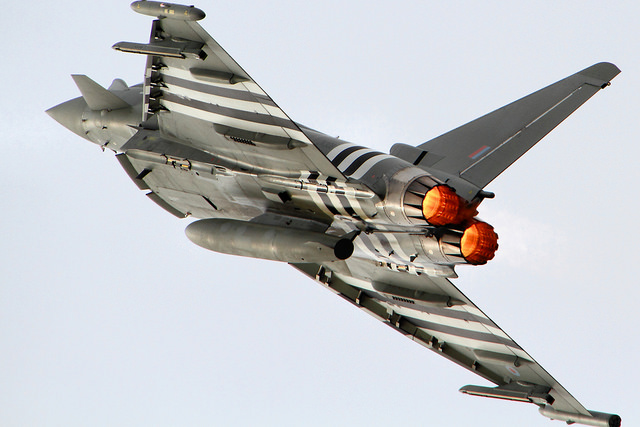In a rare moment of not talking about submarines or frigates at the recent PAC2015 meeting, we sat down for a talk with the good folk from MDBA, a multinational company that does a lot of work for European armed forces. They’re also part of the UK Ministry of Defence’s Complex Weapons consortium, a partnership between the MoD and a number of companies which was set up in 2008.
The approach behind Complex Weapons is interesting, as it reflects one possible response to the increasing difficulty in maintaining a vibrant ecosystem of companies competing to provide state of the art weapons. Given exponentially increasing unit prices and increasingly long development times, it’s hard for companies to stay afloat if they miss out on major contracts. Even the largest contractors in the US feel that pressure; there are concerns that Boeing will withdraw from the fighter aircraft business after production of the Super Hornet runs down. And depending on how the contract for the USAF’s new Long Range Strike Bomber goes, it could cause further consolidation of ownership in America’s defence industry.
The British approach of partnering with industry to manage the development of new weapon systems collectively is effectively running up the white flag on competition. And it’s not just that domestic competition is deemed infeasible for complex weapons systems within the UK; a multi-national approach has long been adopted to try and recover economies of scale in the face of dwindling demand. Multi-national development of combat aircraft such as the Eurofighter Typhoon is now the norm, a model that goes back as far as the 1970s tri-national Panavia program that produced the Multi-Role Combat Aircraft (later Tornado). If you include the 1960s Concorde program, the same pressures have been driving would-be commercial rivals together for half a century now.
It’s a similar story with British shipbuilding. The MoD signed a Terms of Business Agreement in 2009 with an industry consortium that later became BAE Systems Marine – Naval Ships, which was based around industry consolidation and included a long-term assured minimum workload to sustain naval construction in the UK. The agreement has seen an Offshore Patrol Vessel program initiated to ensure shipyard continuity pending the commencement of the Type 26 global combat ship program.
Australia isn’t immune from the pressures driving consolidation and monopoly supply arrangements in Europe. In August, the Abbott government announced that production of the Future Frigate and OPV programs would be brought forward to 2020 and 2018 respectively. Having decided (rightly or wrongly) that the problems with the AWD program are largely due to the boom and bust cycle of naval production, the government probably saw itself with only two viable options; underwrite what’s effectively an open ended commitment to buy from monopoly suppliers, or let the shipbuilding industry go altogether.
The latter would force Australian shipbuilders to close, find export markets (as Austal has done with great success), or carve out niche roles as suppliers in global supply chains. The Australian military aviation industry reached that point long ago; the last Australian produced fast jet came off the production line in the 1960s and the last Australian assembled F/A-18 Hornet was delivered 25 years ago.
But shipbuilding is different, or to be more accurate, the politics of shipbuilding is different, and there’s a bipartisan agreement that lots of welding must occur in South Australia. So purchasing frigates or OPVs from overseas is a non-starter, notwithstanding that there are plenty of suppliers ready to compete and—unlike submarines—some pretty good fits to our requirements. Accepting that political constraint, and the attendant promise of rolling production lines for both, we’re going to have a number of monopoly suppliers of naval vessels. We’ve written before about the challenge of managing a monopoly supplier. It’s tricky, but not impossible.
And we need to keep in mind that there are also costs and risks in running competitive processes. We haven’t done that with fast jets or airlifters, instead preferring to buy them through the US Foreign Military Sales program. As a result, the RAAF is now sitting pretty, with state-of-the-art aircraft arriving from the US on time and on budget. But when we ran a competition for the replacement for the Army’s Black Hawk helicopters, we managed to pick a solution that would take over a decade to get up to speed—and we’re still not there with the Tiger armed reconnaissance helicopter, despite it winning out from several other credible contenders.
Don’t get us wrong; we haven’t had a roadside conversion to a defence industry model where local suppliers are protected from the cold winds of competition come what may. But given trends in the global defence marketplace and the inevitability of political factors in defence acquisition, sometimes a carefully managed monopoly is a lesser evil than a confected competition.


